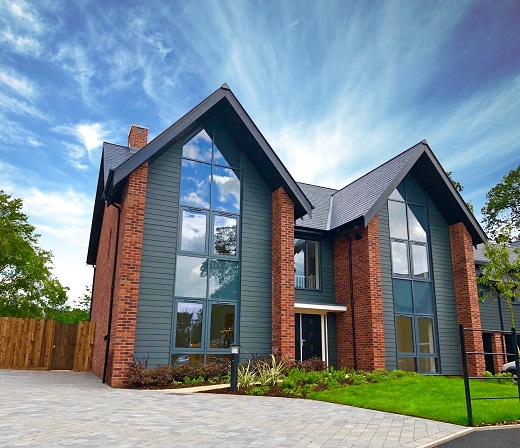Kestrel Soars Into Schueco
Schueco UK has bought Kestrel Aluminium Systems and Kestrel Powder Coating. The deal was completed on 5 September. Schueco UK and Kestrel will continue...
Read Full Article
Mention curtain walling to any specifier or contractor and it’s an odds on bet they won’t associate the term with residential projects - yet technical developments have gradually extended the design scope of such systems.
The first sector to appreciate aluminium for residential was multiple occupancy housing but individual architect-designed homes are now seeing the incorporation of the material.
So, what has prompted this?
When you look at what curtain walling is this should come as no real surprise. Essentially, it is a façade with framing made of metal, PVC-U or timber with vertical or horizontal elements. These are anchored to the supporting structure to provide the functions of an external wall without it being load-bearing. This has positive benefits in terms of installation speed and cost.
In addition, though PVC-U is still used extensively in house building it has clear drawbacks, particularly in terms of expansion and contraction. Aluminium, by contrast, is highly stable and therefore offers a far longer design life. Importantly, aluminium has inherent strength and light weight that PVC-U does not.
“Aluminium frames now provide a combination of the key features a designer needs – strength, thermal efficiency (enhanced by the use of a larger glazing area) and a distinctive visual aesthetic. Add to that the total recyclability of aluminium and it also scores highly in terms of sustainability.”
– Ian Osborne
Kestrel Aluminium Technical Manager
Recycling
"Only 5-10% of the energy used in the production of the primary metal is needed when refabricating from recovered material,” continues Kestrel's Osborne.
CALA Homes
A prime example of a housing project in which curtain walling has been installed as a primary feature is the development of five and six-bedroom houses by CALA Homes on the Coton House Estate near Rugby.
Steve Davies, Architectural Manager for CALA Homes says: “Each of the properties benefits from spacious, flexible living both inside and out with generous, light-filled rooms and large gardens. They are designed to accommodate a range of purchasers looking for the perfect balance between old and new.”
A Kestrel Aluminium 100mm box and plate curtain walling system incorporating 60mm casement windows create a dramatic frontage in each case, providing maximum thermal efficiency through the use of polyamide thermal breaks. Used in conjunction with low U-value double glazing units, the result is secure, energy-efficient and stylish.
Market share
Whether for highly complex architecture or a simple feature of housing design, aluminium curtain walling offers a widest range of uses. With its critical combination of aesthetics and high functionality, the material is set to secure a steadily increasing market share.
Decorative finishes
Developments in thermal technology affecting aluminium systems is also a commonly cited reason for their use. Those from manufacturers such as Kestrel Aluminium retain heat effectively thereby limiting its transfer. They also provide an exceptional standard of durability, a feature assisted greatly by modern powder coating techniques.
Enhanced colour fastness and coating stability prevent any risk of peeling, flaking or fading, retaining an as-installed appearance for years to come.
Such a noticeably improved, lasting visual aesthetic is enhanced by the ability to manufacture any RAL shade to meet project-specific requirements. Specialist manufacturers can also produce dual colours to complement existing or planned facets of interior and exterior design.
Picture: A house by CALA Homes on the Coton House Estate near Rugby has been built utilising aluminium curtain walling.
Article written by Cathryn Ellis
10th June 2020